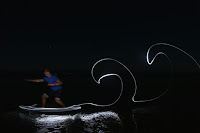 |
| Old farm house in Nelson |
Professional studies week number two!
Monday: we got together to discuss our placement experiences had so far. The students who had completed PHTY458 gave their end of placement presentation - there were a range of topics from treating vertigo, headaches, return to play and music in physiotherapy. Music in physiotherapy was particularly interesting, and was a regular feature of the student's paediatric rehabilitation experience. We were given some homework for Thursday too - a group presentation.
Tuesday: we had morning lectures about Physio Fitt and Green Prescription (the green prescription person forgot to write us into their diary... whoops!) My research group had a meeting with our research supervisor too.
Wednesday: whilst other students went to their area preparation sessions, I whipped up the powerpoint / overview for the group presentation due on Thursday ready for the group meeting at 11am.
 |
| Model of Christchurch Hospital |
Thursday: CDHB requirements for safe manual handling! I've already done the Nelson DHB manual handling requirements, but I wasn't sure what would be included in the Canterbury version so I attended this too. The manual handling course was located in the Canterbury DHB Design Lab. The Design Lab is a huge open warehouse-like space where business and the DHB can build mock-ups / sets for rooms or buildings they are designing / building. We used a mock-up for the new Burwood Hospital wards i.e. the rooms were built in this warehouse Design Lab. It was a great experience. The ceiling hoist was a tool that I haven't seen / used before. We were taught many different uses in manual handling for the Slippery Sam (low friction fabric) - including using it to help put a hoist sling on the patient... good to know (often slings are left on patients after a transfer because they are deemed hard to put on/take off... this is not best practice).


Above: peers performing manual handling with a slippery Sam (sheet / material with minimal friction). The second image is the mock patient room that will be in Burwood Hospital (you can see the ceiling hoist by the chair). It reminds me of a oversized dolls house... where we are the dolls.
We had a presentation from a key stakeholder in a new website designed to be a health information hub for Canterbury. The website is:
http://www.healthinfo.org.nz/
The Spring presentation series!
This is a series of five minute presentations we will give each professional studies week, right through to Spring... it's currently Autumn. The article our group was given was 'Pain worlds: Toward the integration of a sociocultural perspective of pain in clinical physical therapy' by Killick and Davenport (2014). This was an interesting read and I got behind their argument. Here's how we interpreted it / presented the article.
- The article suggested there was a limited sociocultural perspective in rehabilitation literature and clinical practice. It draws upon sociological theories such as feminism, marxism (capitalism), critical theories (amongst other paradigms) to investigate themes and unravelling sociocultural complexities. This is the premise of a sociological ‘world’. Currently these worlds exist in the art and sports contexts, but not in a rehabilitation context. The article affirms the need for the creation of a rehabilitation world, ultimately to guide rehabilitation practices.
The current ICF framework has subcategories within ‘environmental and personal factors’ such as ‘society and individual attitudes, norms, practices and ideologies’, however listing these alone are argued to be insufficient in understanding engrained cultural practices. A rehabilitation world would debunk each of these aspects and provide both dialogue and strategies to understand and influence the sociocultural world of pain. Because no such rehabilitation pain world exists in the literature, this article suggests the Sport’s pain world, an established body of literature, provides evidence that a rehabilitation world would offer practical benefits for rehabilitation practitioners
- The authors explain that we develop our own ideas of what pain is and how we present our pain in a socially acceptable manner (pain behaviour). Four factors underpinning this are:

- Pain talk is the qualitative data received. In the Sports Pain World, pain talk can be categorised / described as:
- Hidden pain: hiding pain from others e.g. not telling tramping group you've got blisters.
- Unwelcome pain: pain is demoralising and must be overcome e.g. it only hurts if you think about it / let it.
- Combative pain: pain is an enemy, you must fight it e.g. I won't be beaten, I'll keep tramping.
- Disrespected pain: some pain is more important than others e.g. I don't care about my blisters... I'll stop to rest if I brake my leg.
- Depersonalised pain: talking about pain as if a separate entity e.g. the wound will heal all by itself - I won't make it worse if I keep going.
- Pleasurable pain: pain is enjoyable e.g. I know I've done a good day tramping if I've got some blisters, or I tackle hard because it causes other players pain and I know I'm stronger than them.
- Clinical relevance
- Practitioners need to listen for pain talk, identify pain behaviours and understand social influences in the patient's environment or their personal factors from the perspective of a 'pain world'.
- We would then target an intervention, and help the patient to overcome sociocultural barriers and pain - each intervention would be individualised.
Friday: Flu vaccinations!! And a lecture on ethics in clinical practice, particularly discussing topics like receiving gifts and professional practice. A key point was to:
- Stay professionally and personally connected. Don't become isolated... isolation = distortion.






























